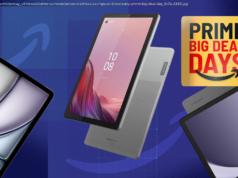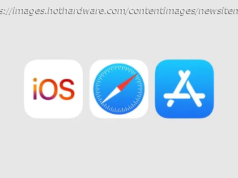Taking a look into the future with Intel Kaby Lake 7th- and now 8th-gen CPUs.
Kaby Lake is the latest generation of CPUs from Intel following the undeniably successful Skylake generation. Powering the vast majority of mainstream laptops and PCs, including the Dell XPS 13 and the latest MacBook Pro 2017, so far we can say it’s been a roaring triumph.
But it’s also been a confusing and frustrating generation for fans of Moore’s Law. Unlike in years past, where the “tick-tock” model would shrink process technology down biennially, the 7th and now 8th-generation Kaby Lake processors are the third and fourth Intel microarchitectures, respectively, to utilize Intel’s 14nm node.
As such, we’ ve made it our duty to write up everything you need to know about Intel Kaby Lake – from its price to its availability to the range of processors available.
Since Kaby Lake arrived on our doorstep last year, we’ ve seen companies as reputable as HP, Dell and Lenovo release their own Kaby Lake-touting notebooks and PCs. Generally considered the standard for Intel processors in 2017, Kaby Lake will soon be succeeded by the 8th-generation Kaby Lake Refresh.
If you’ re thinking, “Wait, isn’ t Coffee Lake the name of Intel’s 8th-generation architecture?”, you would be right, although the Santa Clara chipmaker has come out and said that it plans on releasing three different CPU architectures under the 8th-gen umbrella, namely Kaby Lake Refresh, Coffee Lake and Cannon Lake.
It’s all very disconcerting at first and for no apparent reason other than because Intel “had to reimagine what ‘generation’ means, ” according to Tom’s Hardware. Nonetheless, the key takeaway here is that Kaby Lake Refresh is coming to laptops this year to Ultrabooks and laptops while Coffee Lake is geared towards desktops.
Cannon Lake, on the other hand, will be here later, most likely in the latter half of 2018.
Outside of mobile, there are well over 20 Kaby Lake chips now on the market. From the Celeron G3930 to the Core i7-7700K, practically all the choices you had last generation are still present, albeit with better power efficiency and even a slight spec boost.
The Core i7-7700K is the flagship processor this time around, unlocked for overclocking as indicated by the discrete „K“ moniker. Like the generations before it, the Kaby Lake architecture opts for a numerical naming convention: it consists of the “7” series CPUs to Skylake’s generation 6, Broadwell’s gen 5 and so on.
However, Intel is trying something with Kaby Lake that’s practically unprecedented. By refreshing its 7th-generation processors with more cores, better clock speeds and improved graphics, the company has been able to create an entirely new generation out of its Kaby Lake processors as well, hence the Core i7-8550U being used in the new HP ProBooks.
As far as Intel’s 7th-gen mobile processors are concerned, the most powerful lie in the “H” series, consisting mainly of the Intel Core i7-7700HQ and the Intel Core i7-7820HK. The former can be found in the 15-inch MacBook Pro while the latter is featured predominately in high-end gaming notebooks like the Alienware 17 R4.
At Intel’s low- to medium-power range, there’s the Core i7-7500U, which initially leaked alongside the i7-7700K, but has since been found in the HP Spectre x360 as well as the Razer Blade Stealth. Intended for Ultrabooks on the top-end, this is a relatively high performance chipset, but still belongs to the „U“ ultra-low voltage family.
Meanwhile, Intel’s 8th-generation Kaby Lake processors marked the debut of quad-core processors for Ultrabooks. These include the top-end Intel Core i7-8550U, which operates at a base clock speed of 1.8GHz and a boost speed of 3.7GHz. As for the graphics, you can expect integrated UHD Graphics 620 from Intel.
Further on the mobile front, the higher-end Core m5 and m7 mobile chips of the past are now being interspersed into the Y-series Intel Core family. These include the Core m3-7Y30, the Core i5-7Y54 and the Core i7-7Y75, which are being used in top-end laptops with fanless and convertible designs to complement the more power-hungry U-series processors.
Many of Intel’s 7th- and 8th-generation selections also support Optane, a memory technology that brings hard drive speeds up to par with that of SSDs.
Where have these chipsets ended up? Well, they’ re currently featured in a long list of notebooks, several of which we’ ve already reviewed. The aforementioned Razer Blade Stealth and HP Spectre x360 are joined by the likes of the Lenovo Yoga 720 among many other Ultrabooks, 2-in-1s and full-on laptops.
The MacBook Pro, too, has been given the Kaby Lake treatment, though our review of that model is pending. Because the “H” series Kaby Lake processors typically used in the 15-inch MacBook Pros weren’ t available at the time of its release, Apple’s late 2016 laptops were still clinging to Skylake up until being hastily refreshed at WWDC 2017.
Other laptops equipped with Kaby Lake processors include the new 2-in-1 Dell Latitude 7285 featuring WiTricity magnetic wireless charging and the acclaimed Samsung Notebook 9 Pro convertible laptop. Plus, there are even more Kaby Lake-based laptops expected just around the corner, like the Surface Book 2.
Cannonlake is likely to prove a much more exciting update than Kaby Lake and even Coffee Lake thereafter. You see, Kaby Lake is very similar to the Skylake family we’re already using. This is not what we originally expected of the Skylake successor, but Intel has changed how its processor development works.
Since 2007, Intel has worked in a ‚tick, tock‘ rhythm of upgrades, where one generation shrinks the die, followed by a generation that alters the architecture. That changed this year. As of 2016, Intel now uses a „Process, Architecture, Optimization“ approach, and Kaby Lake represents that last, frankly least interesting stage.
It’s still a 14nm processor that’s fairly similar to Skylake throughout, and the desktop variants will use the same LGA 1151 socket. Unless something goes terribly wrong, Cannonlake will shrink Intel CPUs down to the long-promised 10nm die in 2018.
While there are some performance improvements in store, it seems unnecessary for those with a Skylake CPU to upgrade to a Kaby Lake processor of the same level. That said, there are more options this time around, with higher end Kaby Lake-X CPUs making an impression.
Despite not being the most thrilling generation of processors, there are some distinct improvements that inhabit Intel’s Kaby Lake CPUs. The first is fully integrated support for USB-C Gen 2. Skylake machines can offer this already, but need an extra third-party piece of hardware. Now, its “native”. Again, not exciting, but it is necessary.
Gen 2 USB 3.1 enables bandwidth of 10Gbps, rather than 5Gbps. Thunderbolt 3 support is in, too. In a similar vein, HDCP 2.2 support is native in Kaby Lake. This digital copy protection is a newer version designed for certain 4K video standards. Ultra HD Blu-ray is the key one, though 4K Netflix on Windows 10 also requires a Kaby Lake processor.
That’s right, Kaby Lake also offers integrated GPUs better-suited to 4K video. Thanks to a new media engine built on a Gen9 graphics architecture, users can edit real-time 4K video using nothing more than integrated graphics.
Start
United States
USA — IT Kaby Lake Intel Core processor: 7th- and 8th-gen CPU news, features and...






